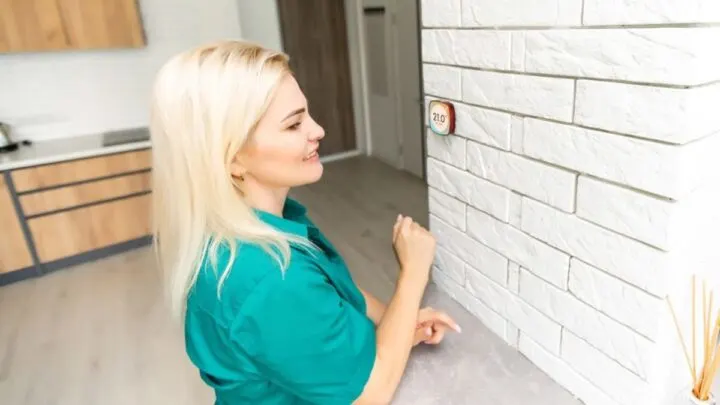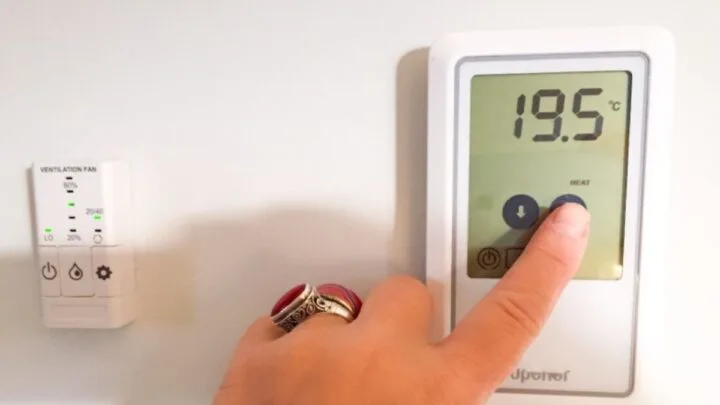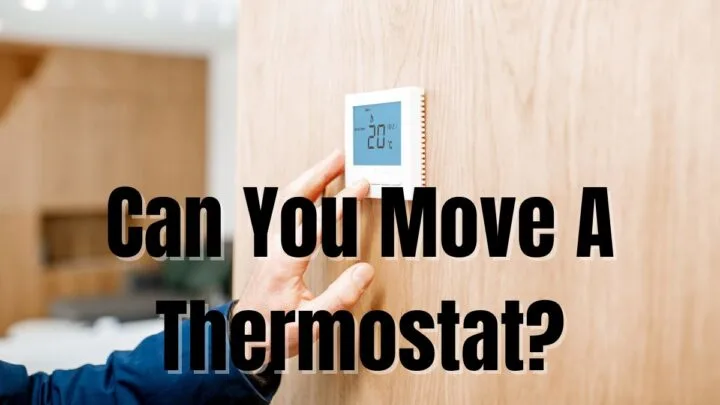When it comes to utility bills and home comfort, thermostat placement matters a great deal.
Homeowners often inquire whether it’s possible to move a thermostat to a different location.
You can move a thermostat if its location isn’t ideal for where your HVAC system needs to operate. As long as you know what you’re doing, you can even DIY its move and not have to call a professional in.
Below, we’ve covered in detail how you can move your thermostat around the house, plus all the scenarios where it’s best to change your thermostat’s location.
When Should You Move Your Thermostat?
If your thermostat is in a position that is causing uneven heating or cooling in your home, changing its placement is a quick way to fix this problem.
Incorrect placement can lead to many complications, such as a higher utility bill and uneven distribution of air around the home.
For example, if your thermostat is in a room with several large windows, this room will heat up very quickly and can trigger off the furnace before the rest of your house is evenly heated.
Misreading and uneven distribution can also occur if your thermostat is in a particularly windy location, and changing its placement is the best way to counter this problem.
Another reason homeowners wish to move their thermostat is that it is unsightly and ruins the home outlook.
For example, the previous homeowners might have chosen a poor location where the thermostat stands out and clashes with the room’s décor.
In these cases, moving the thermostat to a different room or an adjacent wall can significantly help.

How To Move Your Thermostat
If you’re wondering whether you can move the thermostat at home by yourself, the simple answer is yes.
If you are only moving it to an adjacent wall or replacing the thermostat entirely, this should be a relatively easy DIY project any handy homeowner can handle.
But if the work required is a bit more complicated, you may have to call in a specialist.
When moving a thermostat on your own, follow these general steps:
- Make sure to turn off the power before moving the thermostat. Generally, you can switch off the power at your breaker box. If you cannot turn the power off, do not proceed with moving the thermostat, as this can heighten the risk of electric shock.
- Remove the interface from the back of your thermostat panel. Disconnect all cables and remove the back panel from the wall, making sure not to dislodge any connections.
- Afterwards, remove the thermostat from the wall. It will be attached with some screws you can easily take off using a screwdriver. You should take a clear picture of the wire connections to help you when you reconnect the thermostat in the new locations.
- Unravel all wires using pliers or your fingers. Each wire will be a different color, so this should be fairly easy to do.
- You now need to move the wires to the new location. If you wish to move the thermostat to an adjacent wall, running the wires should be simple. The wires should be long enough for you to reposition the thermostat without needing any extensions. Drill a hole in the wall where you want to place the thermostat. Then, use a wire fishing tool to pull your wires through the hole.
- The process is slightly more complicated if you’re moving the thermostat a greater distance. The simplest way is by running the wires on the top corners of your walls and then lowering them to the new location of the thermostat. You can also run the wires through your basement or attic space, but this will require a proper understanding of wire length. Unless you are very confident you can handle the drilling and electric work yourself, it is best to call a professional to move your thermostat a greater distance.
- Once you’ve moved the wires to the new location, you need to reconnect them in their original configuration. Use the photograph you took as guidance for which wire connects where.
- After the wires are installed, reattach your thermostat to the wall using the screws you removed earlier. If the screws are rusted and worn out, you can replace them with newer ones for a secure connection. A screwdriver should suffice when completing this step.
- Make sure all wires are separated and securely connected, and then power on your thermostat. If you’ve done the job well, it should work as before.
However, if the thermostat doesn’t function or you blow the breaker, do not attempt to open the thermostat back up.
Turn off the power and call a professional to get the connection checked.

Choosing A New Location
Thermostats are in charge of informing your cooling system or furnace when to turn on or off.
They do this by sensing the temperature in the location they are placed, so it is essential to install them in a central location that reflects the overall temperature of the house.
When choosing a new location for your thermostat, there are some things you should be careful of.
1. Do not put the thermostat near hot appliances, sunny locations, rooms with large windows, windy areas, or above duct registers. Basically, you should avoid any place which experiences changes in temperature outside the average temperatures in your home.
2. Contrary to popular belief, you should not place your thermostat in the coldest room of your house. The thermostat will keep your heating system on long after your home has been heated to its optimal temperature.
Summing Up If You Can Move a Thermostat
If you are confident in your knowledge about the thermostat system and take all safety precautions, moving your thermostat can be a cost-saving DIY task to handle by yourself.
However, if you are moving your thermostat across a great distance, are unaware of how the furnace works, or have failed to get it functioning after repositioning it, it is best to give a professional HVAC contractor a call.
Working with electrical appliances can be risky, and a poorly installed thermostat can cause many complications in your home.
For the best possible results, call a professional to get the job done safely and smoothly.


